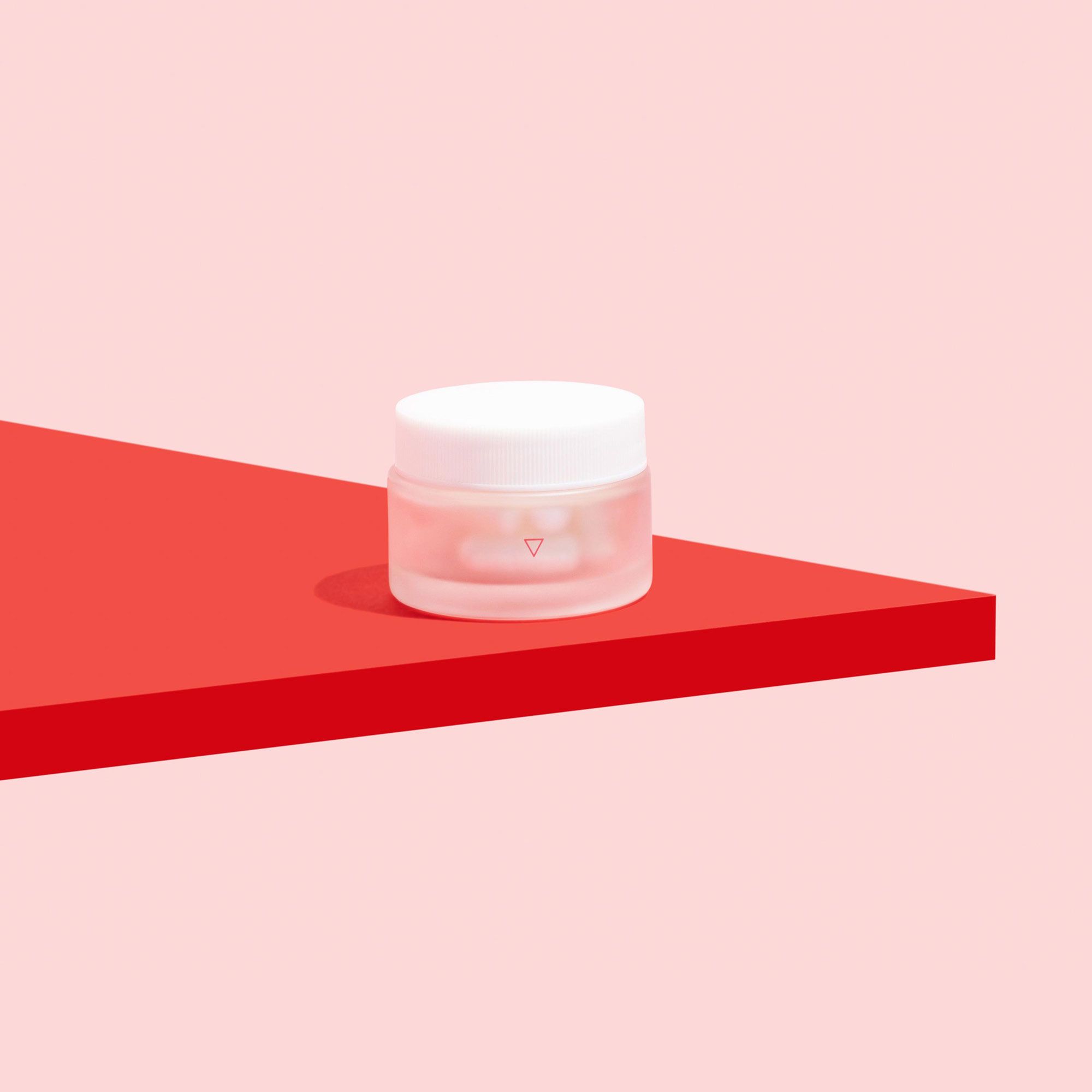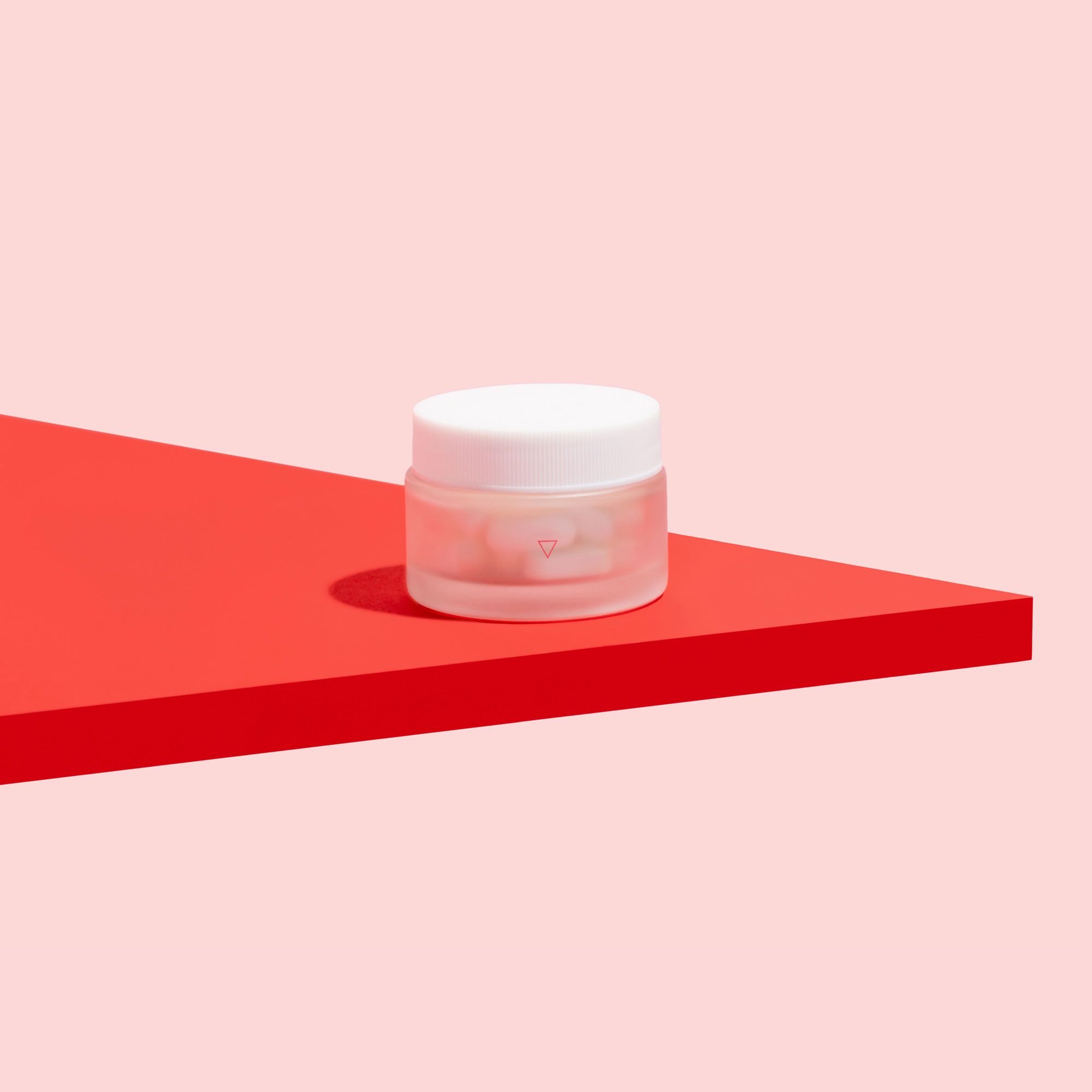
Why Do I Have So Much
Discharge?
By Lizzie De La Cruz
September 22, 2020
Why do I have so much vaginal discharge?
You wake up one morning and notice there's a little more flow down below than you're used to. Maybe you had thick discharge that's become clear and watery discharge, or clear mucus discharge has become white, chunky discharge. Your first instinct may be to panic—but don't worry, we've all been there! If you've had unexpected changes in your vaginal discharge, chances are you're wondering, “Is this normal?” or "What does discharge mean?" Let's break down vaginal discharge to get a better understanding of what it is, why we have it and what's normal.
What is vaginal discharge?
Vaginal discharge is made up of your body's natural water, bacteria, cervical secretions, and skin cells. It doesn't seem too impressive when you hear it spelled out in this way, but it's actually your body's system of self-cleansing. That's right — it's what keeps your vagina clean and healthy! It's normal for your discharge to change depending on where you are in your menstrual cycle. You may see cloudy, white discharge or thick discharge right before your period, and you may have a lot more discharge around ovulation (usually around 2 weeks before your period starts).
Since vaginal discharge is a sign of vaginal health, it's important to pay attention to it! If you find yourself experiencing a sudden or dramatic change in texture, color, or odor, that may mean something is wrong. White, clumpy discharge is a tell-tale symptom of a yeast infection and thin, greenish-grey discharge often points to bacterial vaginosis or an STI. If you find yourself with discharge like this, or experience other symptoms like itching, pain, or an unusual smell, it's a good idea to talk to a doctor.
What's important to know is there is no "end-all be-all" for what is “normal,” as every woman has something a little different going on down there! Some women have heavy discharge, while others have very light discharge, and both could be considered normal for each individual as long as there are no sudden or unexpected changes in texture or color. Why don't we take a closer look at what some of these different textures and colors mean?
Vaginal discharge textures explained
Heavier Than Usual
Does this month's discharge feel heavier than last month? An unusual increase in discharge can be caused by the use of a hormonal contraceptive i.e. birth control pills, intrauterine devices, etc. If you recently started a hormonal birth control method, an increase in vaginal discharge is usually nothing to worry about; if your discharge changes color or has a foul smell it may be a sign something else is going on. More discharge than normal can occasionally signify that you are having a reaction to an allergen or chemical. Sometimes it's the result of a new body wash or waxing kit—if that's the case, give it a break to see if anything changes.
When in doubt, don't be afraid to make an appointment with a physician to let them know your concerns. While it's likely that an increase in discharge is linked to a normal fluctuation of hormones or your menstrual cycle, it is possible that it could be a result of a more serious issue, such as infection, or in rare cases, cancer.
Thick and Lumpy Discharge
Are you feeling a bit itchy down there? The most common reason for a thick, clumpy discharge is a yeast infection. However, it is worth noting that discharge may change in thickness and consistency based on levels of hydration. If you are not drinking enough water, your discharge will likely be more concentrated.
Frothy Discharge
Frothy discharge most often indicates bacterial vaginosis (BV) and is usually accompanied by vaginal itching and a fishy smell. This is an infection caused by an imbalance of bacteria in the vagina but is easily curable with an antibacterial ointment or antibiotic.
Watery Discharge
Watery discharge can also indicate BV, depending on the other symptoms present. Genital herpes may also be a cause of watery discharge, caused by internal blisters. In this case, the discharge is usually opaque or pink and accompanied by sores. More often than not, watery discharge with no other symptoms is normal and nothing to worry about.
Slippery Discharge
A slippery discharge that is unchanged in color and is not accompanied by any other sign of infection such as itching, burning or odor is typically a sign of normal, healthy arousal or sometimes ovulation. It's just your body's way of preparing you for a pain-free sexual experience. (By the way, if you find that you often don't produce enough of this type of discharge on your own, lube can help!)
What color is your vaginal discharge?
White or Cream Discharge
White and cream-colored discharge is typically normal, particularly if it occurs at the beginning or end of your menstrual cycle. Even if it is not in those aforementioned time frames, it is still not typically a cause for alarm unless you notice an excess in white discharge that is accompanied by other abnormal symptoms, such as itching, odor or a change in consistency. For example, a thick, cottage cheese-like discharge is almost always a sign of a yeast infection.
Clear Discharge
Clear discharge is very common and can occur at any point throughout the month. It may be heightened by an increase in exercise. Clear discharge is typically thin, but if it becomes stretchy and more mucous-like, it is usually a sign that you are ovulating. Clear discharge is normal and not typically a cause for concern.
Yellow or Green Discharge
Yellow or green discharge almost always indicates an infection, especially if it is persistent or recurrent. This color discharge is commonly accompanied by a thick texture or foul smell, usually indicating trichomoniasis, an STD or a yeast infection. However, if you are not experiencing any of these symptoms and you are clear of infection, it is possible your diet could be affecting the color of your discharge. If you've started a new diet or have been taking a new vitamin, your discharge color could change without cause for alarm.
Gray Discharge
Gray discharge also commonly indicates infection. Specifically, this points to BV or trichomoniasis. If you are experiencing an abnormally thin, gray or foul-smelling discharge, your best bet is to head to your doctor or take an online symptoms quiz. Both of these infections can be cleared up quickly with prescription antibiotics.
Brown, Red or Pink Discharge
Brown, red or pink discharge is commonly an indication that your period is about to begin, or you may be experiencing breakthrough bleeding. Breakthrough bleeding is any type of bleeding in between your normal menstrual cycles and is not necessarily abnormal. If you are trying to conceive, this type of discharge could also be implantation bleeding, an early sign of pregnancy.
However, there are cases in which this bleeding could be the result of underlying issues such as cervical polyps or an infection. Whether it is due to a yeast infection, BV or an STD, almost any type of vaginal infection can cause bleeding. In very rare cases, this type of discharge could indicate cervical cancer.
When should I be concerned about my discharge?
It's totally understandable to freak out when something is different — and rest assured, you're not the only one who does! That being said, I hope we've been able to put your mind more at ease that, more often than not, a change in discharge is nothing to worry about. However, don't forget that you know your body better than anyone else. If discharge suddenly changes or increases without explanation, has developed an unusual odor, has changed color or is accompanied by pain or itching, that is when we suggest seeking counsel from a medical expert.
Through wisp, you can easily set up an online consultation with a U.S. licensed medical provider, make an appointment for STI testing and learn more about our available health resources.
Get Medication Online

Wisp Equalizing Probiotics
Starting at $74.00
The Wisp Equalizing Probiotics is a daily supplement that contains 25 billion CFU’s of 9 powerhouse probiotic strains (more “good” bacteria!).

Boric Acid Suppositories
Starting at $27.00
An over-the-counter vaginal suppository custom-made to help prevent & relieve infections.

BV Antibiotics (Tablets or Gel)
Starting at $15.00
Request topical or oral prescription antibiotics to treat bacterial vaginosis.

Original Harmonizing Lube
Starting at $10.00
Silicone-based to reduce friction and make sex easier, more pleasurable, and more fun.


